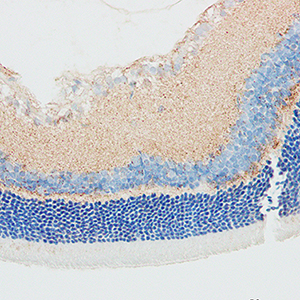 Smart Citations
Smart CitationsSee how this article has been cited at scite.ai
scite shows how a scientific paper has been cited by providing the context of the citation, a classification describing whether it supports, mentions, or contrasts the cited claim, and a label indicating in which section the citation was made.
VEGF promotes diabetic retinopathy by upregulating the PKC/ET/NF-κB/ICAM-1 signaling pathway
Diabetic retinopathy (DR) is a common microvascular complication in patients with diabetes mellitus. DR is caused by chronic hyperglycemia and is characterized by progressive loss of vision because of damage to the retinal microvasculature. In this study, we investigated the regulatory role and clinical significance of the vascular endothelial growth factor (VEGF)/protein kinase C (PKC)/endothelin (ET)/nuclear factor-κB (NF-κB)/intercellular adhesion molecule 1 (ICAM-1) signaling pathway in DR using a rat model. Intraperitoneal injections of the VEGF agonist, streptozotocin (STZ) were used to generate the DR model rats. DR rats treated with the VEGF inhibitor (DR+VEGF inhibitor) were used to study the specific effects of VEGF on DR pathology and the underlying mechanisms. DR and DR+VEGF agonist rats were injected with the PKCβ2 inhibitor, GF109203X to determine the therapeutic potential of blocking the VEGF/PKC/ET/NF-κB/ICAM-1 signaling pathway. The body weights and blood glucose levels of the rats in all groups were evaluated at 16 weeks. DR-related retinal histopathology was analyzed by hematoxylin and eosin staining. ELISA assay was used to estimate the PKC activity in the retinal tissues. Western blotting and RT-qPCR assays were used to analyze the expression levels of PKC-β2, VEGF, ETs, NF-κB, and ICAM-1 in the retinal tissues. Immunohistochemistry was used to analyze VEGF and ICAM-1 expression in the rat retinal tissues. Our results showed that VEGF, ICAM-1, PKCβ2, ET, and NF-κB expression levels as well as PKC activity were significantly increased in the retinal tissues of the DR and DR+VEGF agonist rat groups compared to the control and DR+VEGF inhibitor rat groups. DR and DR+VEGF agonist rats showed significantly lower body weight and significantly higher retinal histopathology scores and blood glucose levels compared to the control and DR+VEGF inhibitor group rats. However, treatment of DR and DR+VEGF agonist rats with GF109203X partially alleviated DR pathology by inhibiting the VEGF/ PKC/ET/NF-κB/ICAM-1 signaling pathway. In summary, our data demonstrated that inhibition of the VEGF/ PKC/ET/NF-κB/ICAM-1 signaling pathway significantly alleviated DR-related pathology in the rat model. Therefore, VEGF/PKC/ET/NF-κB/ICAM-1 signaling axis is a promising therapeutic target for DR.
Downloads
Publication Facts
Reviewer profiles N/A
Author statements
- Academic society
- N/A
- Publisher
- PAGEPress Publications, Pavia, Italy
Ethics Approval
The experimental protocols in this study were approved by the Ethics Committee of the Second Affiliated Hospital of Nanchang UniversitySupporting Agencies
This study was supported by the Key projects of Jiangxi Provincial Department of Science and TechnologyHow to Cite

This work is licensed under a Creative Commons Attribution-NonCommercial 4.0 International License.
PAGEPress has chosen to apply the Creative Commons Attribution NonCommercial 4.0 International License (CC BY-NC 4.0) to all manuscripts to be published.

 https://doi.org/10.4081/ejh.2022.3522
https://doi.org/10.4081/ejh.2022.3522






